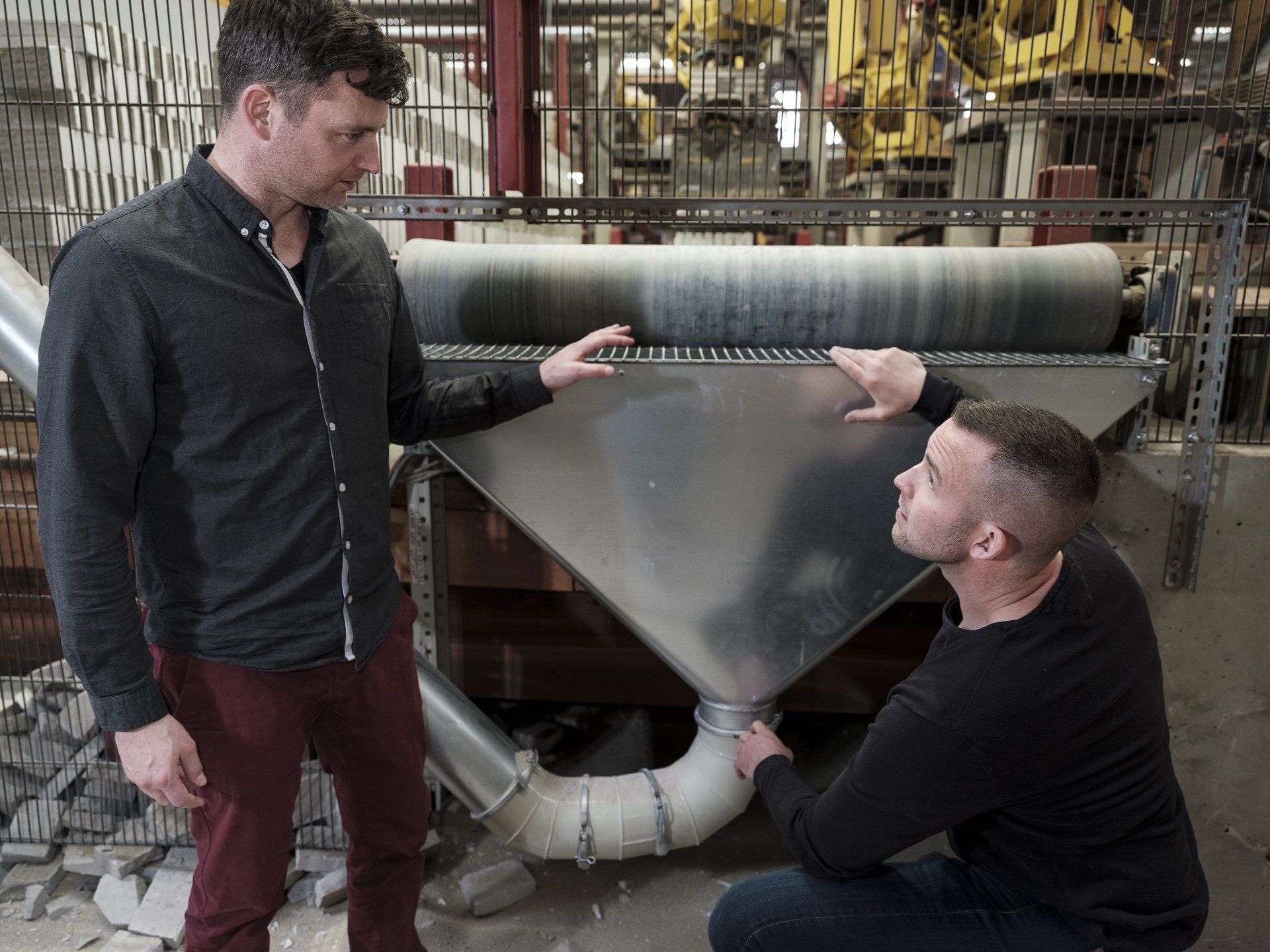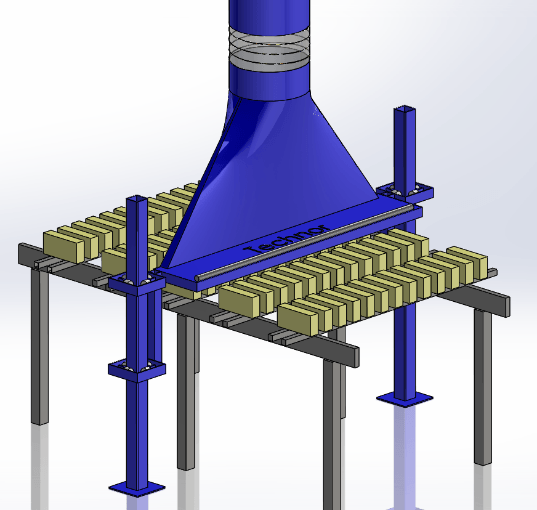System description
Total capacity
Task
Solution
To start with, a 3D model of an extraction hopper is made to extract the sand away from stones and the conveyor. An air knife is often used to blow sand and dust from the stone. A hood is placed over the air knife to remove the swirled material. We have developed a solution that eliminates the air knife by making a specially designed extraction hopper. The omission of the air knife alone saves about 30% of the energy consumption.
As there can be a number of different brick sizes on the conveyor, it has also been necessary to create a system where the distance from the extraction hopper down to the bricks can be changed. This is done by means of a powerful linear actuator with precise positioning. Furthermore, a communication has been made between the actuator and the factory's existing automation system, which allows the height of the extraction hopper to be automatically changed according to the type of brick being used.
The ventilation system was also branched out to the problem areas of the surrounding conveyor belts. At each site, stationary hoods and extraction hoods are installed to ventilate the whirling dust.
The ventilated dust and sand are filtered by a suitable filter. A container is placed under the filter into which the material is dumped. The container can be easily emptied using a forklift.
Result
Sand and dust from bricks and conveyors are removed in an energy-saving way, without operator intervention. The result is that the chance of human error is minimised and the customer's maintenance and cleaning costs are virtually eliminated.
The swirling dust from the conveyor belts has been eliminated, which has improved the working environment and significantly reduced the need for cleaning.
As a side benefit, the collected dust and sand is almost free of impurities, which has meant that the customer can recycle the material in production, benefiting both the environment and the economics of production.









